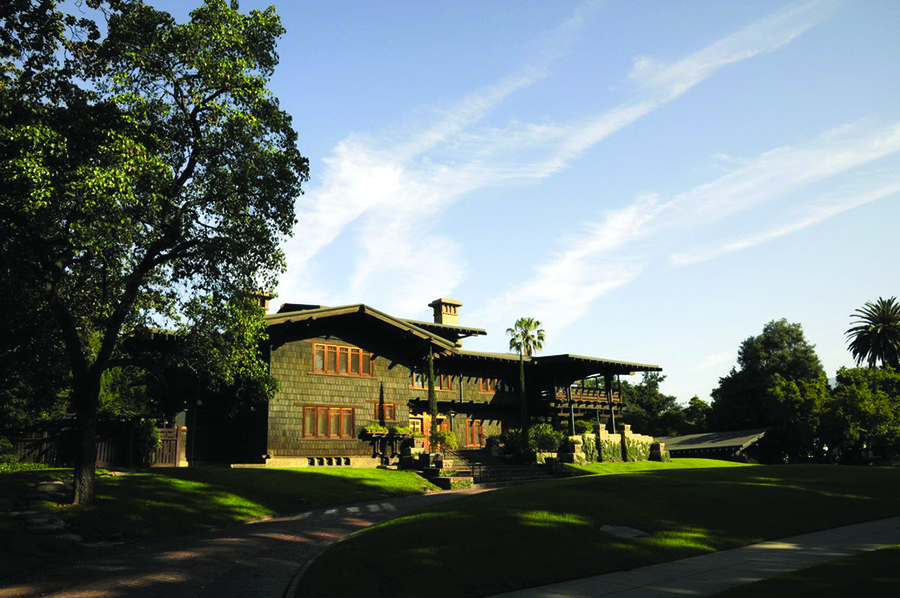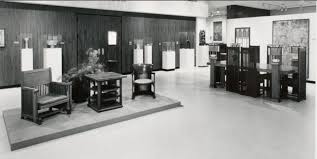
December 2018
To the Many Friends of the Gamble House:
As this most eventful year comes to a close, I can’t help but focus on two things: first, how lucky we are in this community to have a place and a now fully mature institution such as the Gamble House in our midst, and second how important it is that such places have the broad and deep support of their community.
I’m writing to encourage you to make a year-end gift to the Gamble House this season—a statement of support and celebration of a distinguished past, a vibrant present, and a fitting future. Each year, nearly one-third of the income required to conserve the house in its exquisite condition and present its many stories to an interested and international public comes from gifts made by individuals like you. We’re intensely proud of the self-sustaining business model that has grown up with the house, one in which earned income like ticket sales, current philanthropic support such as this appeal, and annual earnings from the house’s endowment are sufficient to support the house’s entire operating costs.
Special gifts permit us to do special things. This year, for example, saw the welcome culmination of a multi-year project to provide the house with a new induction heating system to replace the old and poorly functioning gravity flow furnace known somewhat mordantly as “the octopus.” Thanks go to our ever-resourceful staff—curator Jennifer Trotoux and facilities attendant Jorge Gonzales, as well as to restoration architect Kelly Sutherlin McLeod and conservator John Griswold—for helping to bring this complex project to a long-awaited and successful conclusion. We’re happy to report that, thanks to both experts and donors, our employees and visitors now have real heat on these cold winter days!
In special programing, the Friends of The Gamble House music series culminated in a most accomplished piano and vocal recital given by FOGH president, Greg Parker, who performed for us at the iconic Blacker House (Greene & Greene, 1907) on a 1909 Steinway finished by Greene & Greene for their Berkeley client, William R. Thorsen. The event, made possible by the generosity of homeowners Harvey and Ellen Knell, was a stand-out opportunity for our members, and the many people who chose to join FOGH just to attend. The venue for our annual members meeting in June was another stunning Greene & Greene commission, the Freeman Ford house (Greene & Greene, 1907) overlooking the Arroyo Seco. Our gratitude goes to Brian Kabateck and Roxanne Hampton for generously inviting our members to tour their lovely home and conduct the annual FOGH business meeting in their beautiful garden.
The Fall season brought a special treat to the Gamble House—an exhibition entitled “Shiguchi: The Hidden Art of Japanese Joinery.” This two-month exhibition showcased a private collection of wood sculpture from Japan, well known in its native country but seen in the United States for the first time. Shiguchi are timber-frame joints salvaged from ancient mountain farmhouses in Japan. Guest curator Yoshihiro Takishita interprets and presents shiguchi as objects of contemporary art, investing them with personalities and narratives. Celebrating these intricate and dramatic forms as art promotes cross-cultural understanding and draws into sharp relief awareness of sustainability issues inherent in preserving these artful fragments of Japan’s past. We extend deep appreciation to the Steve and Kelly McLeod Family Foundation for generously supporting this exhibition, in addition to past contemporary art overlays at The Gamble House.
Yes, the house is often a busy place when you take into account the programming presented by the Friends of the Gamble House membership organization, the Docent-led tours enjoyed by some 30,000 visitors this past year, and various other social and scholarly events.
But at its heart, the house remains an oasis of singularity and serenity, a reminder and a refuge. The transitions currently being imagined and analyzed for the future governance of the house should be understood in the century-long context of the house as the pinnacle of achievement in the Greene’s search for “architecture as fine art,” and within the 50+ years of its evolution and maturation as a beloved community resource. Private, individual and passionate public support has been fundamental in the house’s preservation and presentation for a long time, and I am very sure that will continue.
I think there is great value in ideas that are strong, true, and resilient through time. It seems to me that the architectural ideas of the Greene brothers fall into that category, as do the philanthropic and community-building ideas of the Gamble family. We are so fortunate to have both those concepts embodied and brought to life by the Gamble House—as an icon of progressive architecture, as a locus of heritage tourism, and now an educational and research institution as well as a public attraction. If the first chapter in the history of the house was its life as a private and much-beloved residence, and the second chapter has been the establishment of the house as a public resource and amenity, then this third chapter heralds The Gamble House as a mature and vibrant institution, surrounded by the people, talent, and resources necessary for its conservation in perpetuity and its continued growth in service and value to the community. We’re all very fortunate to have such a treasure in our midst. I believe it’s both our responsibility and our joy to be able to take care of this gift.
I hope you will join us.
With my thanks in advance for your interest and support, and my best wishes to you in the holiday season and into the new year.

David Brown
President, Friends of the Gamble House







Leave a Reply